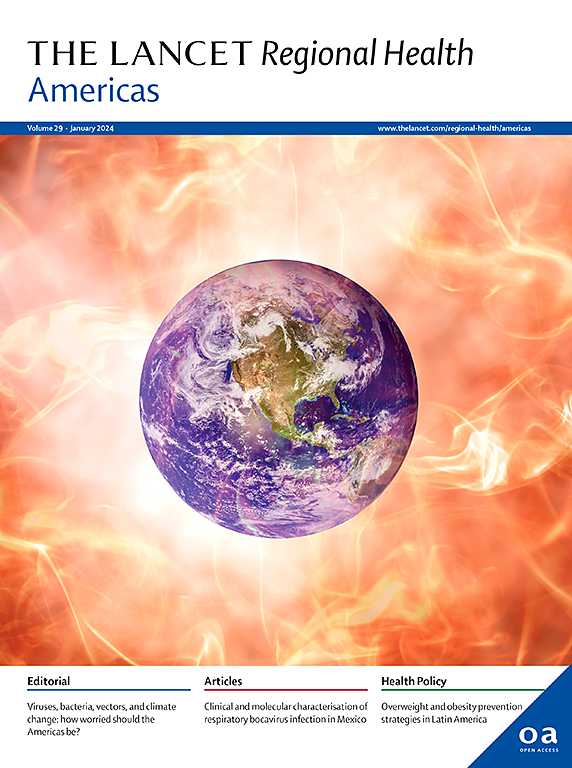Protective and risk factors of suicide in Native American youth: cross-sectional findings from a mixed-methods study
IF 7
Q1 HEALTH CARE SCIENCES & SERVICES
引用次数: 0
Abstract
Background
Native American (American Indian/Alaska Native) youth have the highest rates of suicide and suicide clusters in the United States, and appropriate responses are lacking. This study examined protective and risk factors for suicide in a remote Northern Plains reservation with a recent cluster.
Methods
A mixed-methods study was conducted on the Fort Belknap Indian Reservation, Montana, in 2022 using a community-engaged approach. Quantitative results from the 251-item questionnaire are presented, which were derived from a culturally adapted socio-ecological model. Aaniiih and Nakoda youth 14–24 years of age, living on/near Fort Belknap were recruited.
Findings
In total, 197 youth completed the questionnaire; average age was 16.6 years (SD = 2.60). One hundred (51%) youth were female and 90 (46%) male; 6.1% of data points were missing. Positive family relationships, communal mastery, benevolent childhood experiences, and emotional intelligence were protective, decreasing odds of suicide ideation. Childhood and family risk factors correlated with increased odds of suicidal ideation, including verbal abuse, low community support, sexual abuse, and witnessing community violence. Utilizing multivariable modeling, emotional intelligence (protective factor), and early initiation of substance use, verbal abuse, PTSD, and historical losses (risk factors) were significant factors for suicide ideation, when controlling for all other factors.
Interpretation
Adverse childhood experiences, early initiation of substance use, and PTSD increase suicide ideation and attempts. When youth experience positive and supportive family relationships, odds of suicide ideation are lower, which highlight pivotal areas for intervention and response.
Funding
William T. Grant and Doris Duke Family Foundations.
美国原住民青年自杀的保护和危险因素:一项混合方法研究的横断面结果
美国原住民(美洲印第安人/阿拉斯加原住民)青少年的自杀率和自杀集群率在美国最高,但缺乏适当的应对措施。本研究对北部平原偏远保留区的自杀保护和风险因素进行了调查。方法采用社区参与的方法,于2022年在蒙大拿州贝尔纳普堡印第安人保留地进行了一项混合方法研究。从251项问卷的定量结果提出,这是来自一个文化适应的社会生态模型。招募了居住在贝尔纳普堡附近的14-24岁的Aaniiih和Nakoda青年。共有197名青少年完成了问卷调查;平均年龄16.6岁(SD = 2.60)。100名(51%)青年为女性,90名(46%)为男性;6.1%的数据点丢失。积极的家庭关系、集体掌控、仁慈的童年经历和情商都具有保护作用,可以降低自杀念头的几率。童年和家庭风险因素与自杀意念增加的几率相关,包括言语虐待、低社区支持、性虐待和目睹社区暴力。利用多变量模型,在控制所有其他因素的情况下,情绪智力(保护因素)、早期药物使用、言语虐待、创伤后应激障碍和历史损失(危险因素)是自杀意念的重要因素。不良的童年经历、早期药物使用和创伤后应激障碍会增加自杀的想法和企图。当青少年经历积极和支持的家庭关系时,自杀意念的几率较低,这突出了干预和应对的关键领域。资助威廉·t·格兰特和多丽丝·杜克家族基金会。
本文章由计算机程序翻译,如有差异,请以英文原文为准。
求助全文
约1分钟内获得全文
求助全文
来源期刊

Lancet Regional Health-Americas
Multiple-
CiteScore
8.00
自引率
0.00%
发文量
0
期刊介绍:
The Lancet Regional Health – Americas, an open-access journal, contributes to The Lancet's global initiative by focusing on health-care quality and access in the Americas. It aims to advance clinical practice and health policy in the region, promoting better health outcomes. The journal publishes high-quality original research advocating change or shedding light on clinical practice and health policy. It welcomes submissions on various regional health topics, including infectious diseases, non-communicable diseases, child and adolescent health, maternal and reproductive health, emergency care, health policy, and health equity.
 求助内容:
求助内容: 应助结果提醒方式:
应助结果提醒方式:


